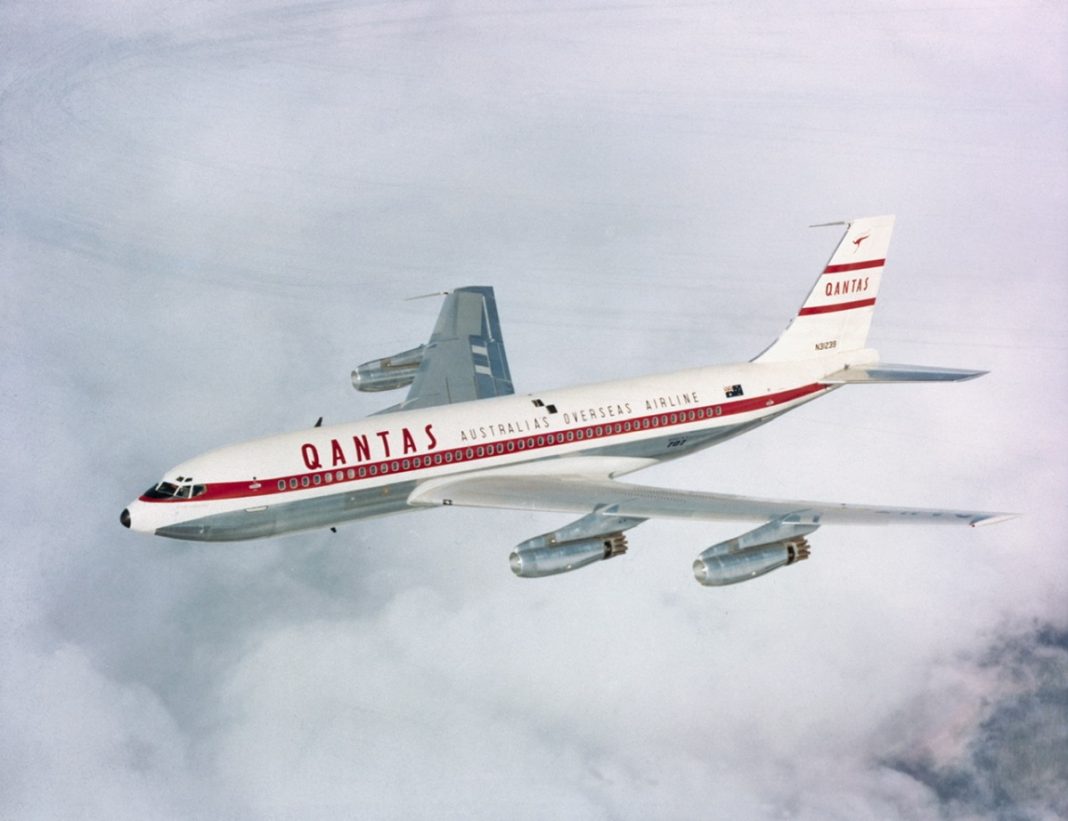London to Sydney, or affectionately known as the Kangaroo Route, is one of the worlds longest and oldest routes linking two countries, the United Kingdom and Australia. How did it start? And how much has the price changed?

The start of the Kangaroo route
The first scheduled service between Australia and the United Kingdom took place on April 13th 1935. It would take 12 days and fly 12,753 miles. The aircraft, a De Havilland 86, would leave Brisbane and fly to Charleville, Longreach, Avon Downs, Cloncurry, Newcastle Water, Daly Waters, Katherine, Darwin, Rambang (Indonesia), Singapore, Yangoon, Jodhpur, Karachi, Sharjah, Baghdad, Cario, Alexandria, Crete, Brindisi – then a train to Paris before reaching London.
All for the small price of $12,000 in current dollars. But for that price, you got there much faster than a ship, and the co-pilot handed out sandwiches for lunch.

Naturally, that flight is unpractical, but it was the first and only way to get from one side of the planet to another in a reasonable amount of time.
Then in 1947, after the war (the kangaroo route shut down and airlines flew ‘sunset flights’ instead, flying around Indonesia in darkness to avoid Japanese patrols), airlines restarted with a new four-day plan flying the Lockheed Constellation. This new route would take 55 hours in the air and fly from Sydney to Darwin, then to Singapore (staying overnight), Kolkata, Karachi, Cario (hotel stay again), Tripoli and then land in London.

This new improvement route cost more, around $27,442 for a round trip ticket.
From here Qantas and BOAC would upgrade the route with more modern jet aircraft (like the Boeing 707) that would reduce the stops, speed up the travel time and lower the price. By 1969, Qantas operated eleven Kangaroo Route flights a week from London to Sydney, taking just over thirty hours with six stops.
Modern times
The kangaroo route took off when airlines had access to modern aircraft, like the Boeing 747 and Airbus A380. This allowed the ticket price to fall dramatically, and the rise of midway hubs. While aircraft could technically fly the whole way (set by a Qantas 747 delivery flight), it was far more profitable to have passengers stop in Dubai, Hong Kong, Singapore, Qatar and more.

Sensing that there was room for improvement, Qantas upped the anty by launching the first in a series of direct non-stop routes – London to Perth. This flight reduced the travel time down to just 16 hours (with no stops) to reach Australia (although there was an additional flight to Sydney) and cut off the middle-east and South East Asia stopovers.

From here, Qantas has plans to launch a direct twenty-hour plus service from Sydney to London, as soon as they have the appropriate aircraft.
Prices would fall to around $900 for a return trip, which considering the earlier prices in its history is a significant improvement.
During the current crisis
Finishing off this timeline is the most recent price changes. As the current crisis hit a crescendo, the prices at first dramatically as many of the airlines had way too many seats and no travellers as holiday plans vanished.

Thus airlines scaled back their operations and cancelled flights – leaving only a few seats remaining and dramatically increasing fares. Even the route itself became warped, with the stopover changing from Dubai and Singapore to stranger destinations like Tokyo, Frankfurt and Cairo.
Until the current crisis is over, travelling between these two countries will seem more alike to the beginning than the modern experience we have known in the last two years.
[ad_2]
Source link


